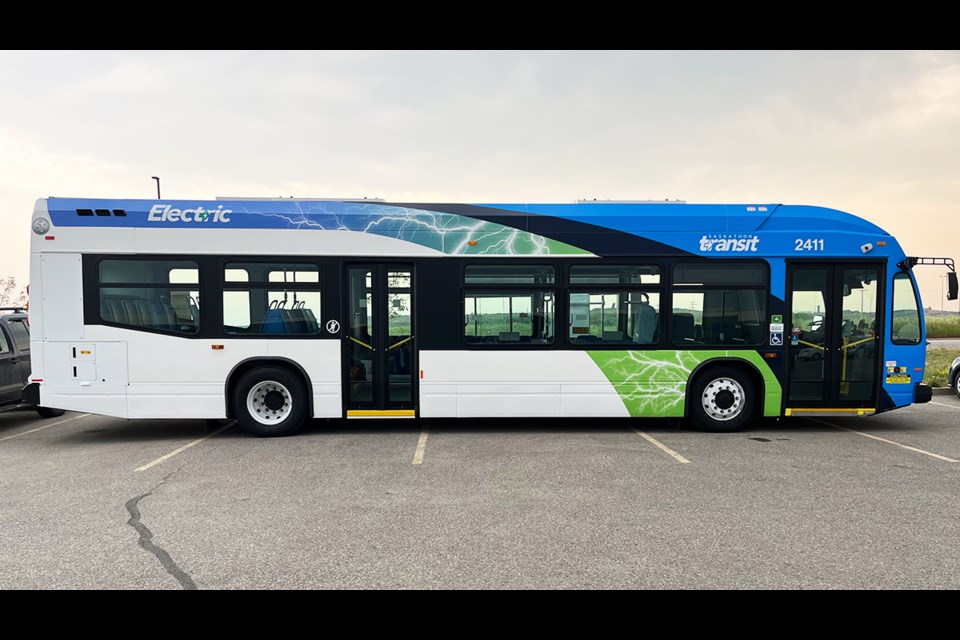SASKATOON—Saskatoon Transit has added two new battery-electric buses to its fleet. This is part of the city’s , which aims to transition to an environmentally friendly mode of public transportation gradually.
Saskatoon Transit Director Michael Moellenbeck said the two electric buses presented to local media at the Civic Operations Centre on Thursday, July 25, are the city's first step toward its long-term sustainability goals.
"Access to safe and efficient public transportation is an effective way to cut greenhouse gas emissions, and these battery-electric buses are an example of how we can reach environmental targets and provide a cleaner option for Saskatoon,” said Moellenbeck.
The electric buses should also help the city achieve its target of reducing carbon dioxide emissions by 55,000 tonnes by 2050 and increasing public transport users by five and 10 per cent in 2030 and 2050, respectively.
The buses can be identified with their "Electric" decals.
The city sees introducing electric buses, the first in the province, as a significant milestone in its commitment to being a leader in environmentally friendly and sustainable modes of public transportation.
In July 2020, Saskatoon Transit tested a battery-powered electric bus for 12 months. The pilot project aimed to evaluate the performance and feasibility of battery-electric buses in Saskatoon’s climate, providing critical data to inform future investments.
Building on the pilot project's success, the City Council approved an initial investment in battery-electric buses, a greener and more efficient public transportation network, in December 2021 for the broader $115.4 million revised 2023-2031 fleet renewal strategy.
The 40-foot long-range battery-electric bus model can accommodate up to 59 passengers, including 41 in the seating capacity. The bus can run over 300 kilometres before recharging factoring in temperature, weather, topography and battery health.
Charging will take about three hours and will be done when the bus is parked at the Civic Operations Centre. Saskatoon Transit plans to operate the Nova LFSe+ buses year-round, using a hybrid-diesel auxiliary heater to prevent range reduction in cold weather.
Saskatoon Transit will also work with the Canadian Urban Transit Research & Innovation Consortium to implement its zero-emissions fleet plan. A study will include detailed information on GHG reductions and fuel savings and will be presented to the city council in 2025.
The city says industry estimates suggest that one battery-electric bus in the Saskatoon Transit fleet could reduce GHGs by approximately 60 tonnes annually, save roughly $40,000 annually in fuel and lower operation and maintenance costs.
For more information about Saskatoon Transit, visit .




